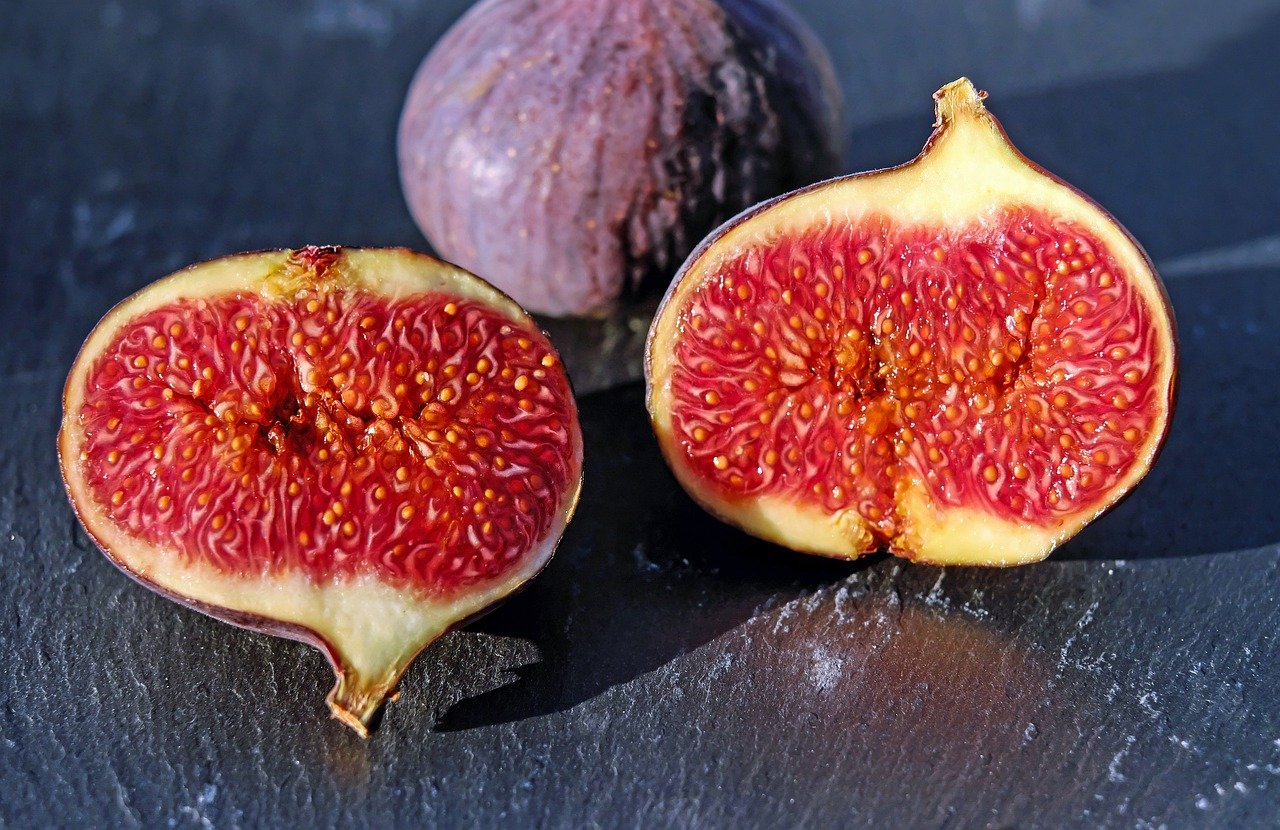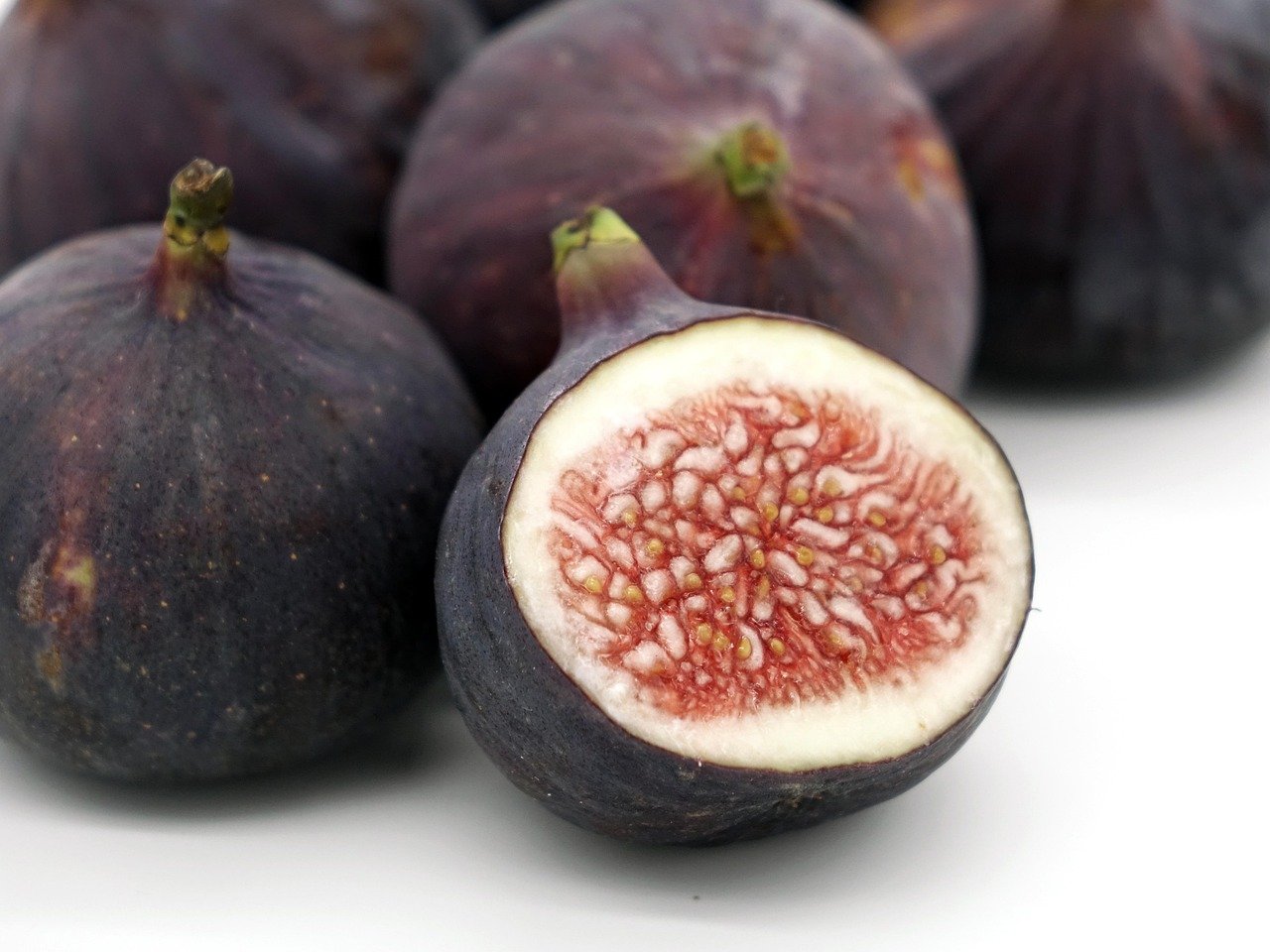Can dogs eat figs? Yes, but in moderation. Figs are safe for dogs when given as an occasional treat and can even offer some health benefits, such as fiber and antioxidants that support digestion. However, because they are naturally high in sugar, feeding your dog too many figs could lead to an upset stomach or even diarrhea. It’s also important to remove the skin and stem before giving figs to your dog, as they can be a choking hazard. While figs aren’t toxic, always introduce new foods carefully and monitor your dog for any signs of allergies or digestive issues.
What Exactly Are Figs?

Figs are unique, sweet fruits that have been enjoyed by humans for thousands of years. Their soft, honey-like flesh and crunchy seeds make them especially appealing. But what exactly is a fig? It’s not just a fruit; it’s a type of multiple fruit, meaning it’s made up of many tiny flowers that have fused together. Figs are known for their high fiber, natural sugars, and rich nutrients like potassium and calcium. While these qualities make figs a healthy choice for people, their impact on dogs can be quite different. It’s tempting to think “healthy for me, healthy for my dog,” but the world of canine nutrition is full of surprises.
Are Figs Safe for Dogs?

When it comes to safety, figs occupy a gray area for dogs. The good news is that figs are not toxic to dogs. This means that if your dog snatches a piece off the counter, there’s no need for immediate panic. However, that doesn’t mean figs are risk-free. The natural sugars in figs can be tough on a dog’s digestive system, especially if eaten in large amounts. Some dogs might also experience allergies or stomach upset after eating figs. So, while figs are not poisonous, they should only be given in moderation—and always with caution.
Nutritional Benefits of Figs for Dogs

Figs pack a nutritional punch, even for canines. They contain dietary fiber, which can help regulate a dog’s digestion and support gut health. Figs also provide small amounts of vitamins A, B, and K, which support vision, energy, and blood health. The potassium and calcium in figs might help keep your dog’s muscles and bones strong. That said, the benefits can quickly be outweighed by risks if figs are given too often or in large portions. A tiny, occasional bite can be a fun treat, but figs should never replace your dog’s balanced diet.
Potential Risks and Side Effects
Despite the benefits, figs can cause problems for your furry companion. The high fiber content, while healthy in moderation, can lead to diarrhea or upset stomach if your dog eats too much. Figs are also high in sugar, which is not ideal for dogs, especially those with diabetes or weight issues. In rare cases, some dogs may develop allergic reactions to figs, showing symptoms like itching, swelling, or trouble breathing. Additionally, the sap from fig leaves and stems contains compounds that can irritate your dog’s skin or mouth if chewed. That’s why it’s crucial to offer only the fruit, and only in small amounts.
Can All Dogs Eat Figs?

Not all dogs react to figs the same way. Some pups have sensitive stomachs or food allergies that make certain fruits off-limits. Puppies, senior dogs, and those with chronic health issues like diabetes or pancreatitis should steer clear of figs altogether. Even healthy adult dogs can react to new foods with upset stomachs or allergic symptoms. If your dog has never tried figs before, introduce them slowly and watch for any unusual behavior. Always consult your veterinarian if you’re unsure—each dog is unique, and what works for one may not work for another.
How Much Fig Can Dogs Eat?

Portion control is everything when it comes to figs. Even if your dog seems to love the taste, too much can quickly lead to trouble. As a general rule, treats like figs should make up less than 10% of your dog’s daily calories. For a small dog, this might mean just a tiny piece; for a larger dog, perhaps a small slice. Always remove the stem and any leaves, and cut the fruit into bite-sized pieces to prevent choking. Start with one small piece to see how your dog reacts before offering more another day.
Fresh Figs vs. Dried Figs

Not all figs are created equal—especially when it comes to dried figs. Fresh figs contain more water and less sugar per bite, making them a safer occasional treat. Dried figs, on the other hand, are concentrated with sugar and calories, which can quickly overwhelm a dog’s system. The drying process also removes much of the water content, making dried figs a potential choking hazard for smaller dogs. If you want to share figs with your pup, always choose fresh and keep the portions tiny.
Preparing Figs Safely for Dogs
If you decide to let your dog try a fig, preparation is key. Wash the fig thoroughly to remove any pesticides or chemicals from the skin. Remove the stem and any leaves, as these can be irritating or even harmful to dogs. Cut the fig into small, manageable pieces that are easy for your dog to chew and swallow. Never offer figs that have gone bad or are moldy, as spoiled fruit can make dogs sick. Treat figs like any special snack—occasional, carefully prepared, and always supervised.
Signs of a Bad Reaction in Dogs

It’s important to know the warning signs if your dog doesn’t react well to figs. Watch for symptoms like vomiting, diarrhea, excessive drooling, itching, swelling around the mouth, or coughing after eating figs. In rare instances, a dog might have a more serious allergic reaction, struggling to breathe or collapsing. If you notice any of these symptoms, contact your veterinarian right away. Even mild digestive upset should be a sign to avoid figs in the future.
The Final Word: Should You Feed Your Dog Figs?

Sharing food with your dog can be a joyful experience, but not all treats are created equal. Figs are safe for most dogs when given in tiny amounts, but they also come with risks that every pet owner should know. It’s all about balance, moderation, and understanding your dog’s unique needs. If you’re ever in doubt, a quick call to your vet can save a lot of worry down the road. Remember, your dog’s health and happiness are always worth a little extra care.

Linnea is a born and bred Swede but spends as much time as possible in Cape Town, South Africa. This is mainly due to Cape Town’s extraordinary scenery, wildlife, and atmosphere (in other words, because Cape Town is heaven on earth.) That being said, Sweden’s majestic forests forever hold a special place in her heart. Linnea spends as much time as she can close to the ocean collecting sea shells or in the park admiring puppies.






